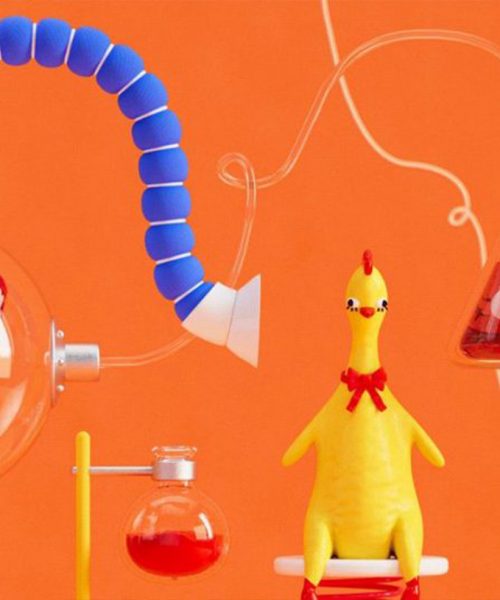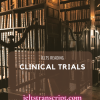- Đối với sản phẩm có giá: Sau khi chúng tôi ghi nhận thông tin đã thanh toán sản phẩm của bạn, sản phẩm sẽ được mở khóa và bạn có thể xem trực tiếp và tải tài liệu sản phẩm.
- Đối với thành viên trả phí: Bạn có thể mua và thanh toán sản phẩm với giá 0đ để tải tài liệu sản phẩm.
- Bạn có thể liên hệ với chúng tôi để được hỗ trợ mở khóa sản phẩm sớm nhất.
ARE WE MANAGING TO DESTROY SCIENCE?
- Chúng tôi chấp nhận các phương thức thanh toán sau đây: Thẻ tín dụng, thẻ ghi nợ, PayPal, chuyển khoản ngân hàng và tiền mặt.
Chúng tôi sẽ không thu thêm phí cho bất kỳ hình thức thanh toán nào.
- Nếu bạn gặp vấn đề về sản phẩm của chúng tôi trong thời gian sử dụng, vui lòng liên hệ với chúng tôi để được hỗ trợ xử lý sớm nhất nhé.
Xem trước mẫu
ARE WE MANAGING TO DESTROY SCIENCE?
The government in the UK was concerned about the efficiency of research institutions and set up a Research Assessment Exercise (RAE) to consider what was being done in each university. The article hich follows is a response to the imposition of the RAE.
In the year ahead, the UK government is due to carry out the next Research Assessment Exercise (RAE ). The goal of this regular five-yearly check-up of the university sector is easy to understand: to increase productivity within public sector research. But striving for such productivity can lead to unfortunate consequences. In the case of the RAE, one risk attached to this is the creation of an overly controlling management culture that threatens the future of imaginative science.
Academic institutions are already preparing for the RAE with some anxiety—understand-ably so, for the financial consequences of failure are severe. Departments with a current rating of four or five (research is rated on a five point scale, with five the highest) must maintain their score or face a considerable loss of funding. Meanwhile, those with ratings of two or three are fighting for their survival.
The pressures are forcing research management onto the defensive. Common strategies for increasing academic output include grading individual researchers every year according to RAE criteria, pressurising them to publish anything regardless of quality, diverting funds from key and expensive laboratory science into areas of study such as management, and even threatening to close departments. Another strategy being readily adopted is to remove scientists who appear to be less active in research and replace them with new, probably younger, staff.
Although such measures may deliver results in the RAE, they are putting unsustainable pressure on academic staff. Particularly insidious is the pressure to publish. Put simply, RAE committees in the laboratory sciences must produce four excellent peer-reviewed publications per member of staff to meet the assessment criteria. Hence this is becoming a minimum requirement for existing members of staff, and a benchmark against which to measure new recruits.
But prolific publication does not necessarily add up to good science. Indeed, one young researcher was told in an interview for a lectureship that, although your publications are excellent, unfortunately, there are not enough of them. You should not worry so much about the quality of your publications.’
In a recent letter to Nature, the publication records of ten senior academics in the area of molecular microbiology were analysed. Each of these academics is now in very senior positions in universities or research institutes, with careers spanning a total of 262 years. All have achieved considerable status and respect within the UK and worldwide. However, their early publication records would preclude them from academic posts if the present criteria were applied.
Although the quality of their work was clearly outstanding—they initiated novel and perhaps risky projects early in their careers, which have since been recognised as research of international importance— they generally produced few papers over the first ten years after completing their PhDs. Indeed, over this period, they have an average gap of 3-8 years without the publication or production of a cited paper. In one case there was a five-year gap. Although these enquiries were limited to a specific area of research, it seems that this model of career progression is widespread in all of the chemical and biological sciences.
It seems that the atmosphere surrounding the RAE may be stifling talented young researchers or driving them out of science altogether. There urgently needs to be a more considered and careful nurturing of our young scientific talent. A new member of academic staff in the chemical or biological laboratory sciences surely needs a commitment to resources over a five- to ten-year period to establish
...CHÚNG TA ĐANG CỐ HỦY HOẠI NỀN KHOA HỌC?
Chính phủ Vương quốc Anh lo ngại về tính hiệu quả của các tổ chức nghiên cứu và thiết lập một Chương trình Đánh giá Nghiên cứu (RAE) để đánh giá những việc đang được thực hiện ở mỗi trường đại học. Bài báo sau đây là một lời đáp đối với sự áp đặt của RAE.
Trong năm tới, chính phủ Vương quốc Anh sẽ thực hiện Chương trình Đánh giá Nghiên cứu (RAE) tiếp theo. Mục đích của việc kiểm tra định kỳ 5 năm một lần này đối với các trường đại học rất dễ hiểu: để tăng năng suất trong các nghiên cứu khu vực công. Nhưng việc phấn đấu vì năng suất như vậy có thể dẫn đến những hậu quả không mong muốn. Trong trường hợp của RAE, rủi ro đi kèm với điều này là việc tạo ra một văn hóa quản lý kiểm soát quá mức đe dọa tương lai của khoa học giàu óc sáng tạo.
Các tổ chức học thuật đang chuẩn bị cho RAE với những lo lắng — hoàn toàn có thể hiểu được, vì những hậu quả tài chính của việc thất bại là rất nghiêm trọng. Các phòng ban có xếp hạng hiện tại là bốn hoặc năm (nghiên cứu được đánh giá trên thang năm điểm, với năm là điểm cao nhất) phải duy trì số điểm của họ hoặc đối mặt với tổn thất kinh phí đáng kể. Trong khi đó, những phòng ban có xếp hạng hai hoặc ba đang chiến đấu vì sự sống còn của họ.
Những áp lực đang đẩy công tác quản lý nghiên cứu vào thế phòng thủ. Các chiến lược phổ biến để tăng sản phẩm nghiên cứu học thuật bao gồm chấm điểm các nhà nghiên cứu cá nhân hàng năm theo tiêu chí RAE, gây áp lực để họ xuất bản bất kỳ thứ gì mà không quan tâm chất lượng, chuyển nguồn chi phí từ nghiên cứu khoa học trọng điểm và đắt đỏ trong phòng thí nghiệm sang các lĩnh vực nghiên cứu như quản lý, và thậm chí đe dọa đóng cửa các phòng ban. Một chiến lược khác đang được áp dụng nhanh chóng là loại bỏ những nhà khoa học kém tích cực trong nghiên cứu và thay thế họ bằng những nhân viên mới, có thể trẻ hơn.
Mặc dù các biện pháp như vậy có thể mang lại kết quả với RAE, nhưng chúng lại gây áp lực không bền vững đối với những người làm chuyên môn. Đặc biệt ngầm gây áp lực cho xuất bản. Nói một cách đơn giản, các ủy ban RAE trong những ngành khoa học phòng thí nghiệm phải tạo ra bốn công trình xuất sắc được bình duyệt cho mỗi thành viên để đáp ứng các tiêu chí đánh giá. Do đó, điều này đang trở thành một yêu cầu tối thiểu đối với các thành viên hiện có của đội ngũ nhân viên và là tiêu chuẩn để đánh giá những thành viên mới.
Nhưng việc công bố nhiều không đồng nghĩa với chất lượng khoa học cao. Thật vậy, một nhà nghiên cứu trẻ được nhận xét trong một cuộc phỏng vấn cho vị trí giảng viên rằng, mặc dù các công bố của bạn rất xuất sắc, nhưng thật không may, số lượng là không đủ. Bạn đừng nên bận tâm quá nhiều về chất lượng các công bố của mình.’
Trong một lá thư gửi cho tạp chí Nature gần đây, các báo cáo về công bố của mười nhà khoa học cấp cao trong lĩnh vực vi sinh phân tử đã được phân tích. Mỗi người trong số họ hiện đang giữ những vị trí rất quan trọng trong các trường đại học hoặc viện nghiên cứu, với sự nghiệp kéo dài tổng cộng 262 năm. Tất cả họ đều có được vị thế và sự tôn trọng đáng kể trong Vương quốc Anh và trên toàn thế giới. Tuy nhiên, các báo cáo về các công bố trước đây của họ sẽ loại họ khỏi các vị trí chuyên ngành nếu các tiêu chí hiện tại được áp dụng.
Mặc dù chất lượng công trình của họ hoàn toàn xuất sắc – họ đã sớm khởi đầu các dự án mới lạ và có lẽ là mạo hiểm trong sự nghiệp, nhờ đó đã được công nhận là nghiên cứu có tầm quan trọng quốc tế – họ thường chỉ cho ra được số ít bài báo trong vòng mười năm đầu sau khi hoàn thành bằng tiến sĩ. Thật vậy, trong giai đoạn này, trung bình họ có một khoảng thời gian từ 3-8 năm không có công bố hoặc bài báo nào được trích dẫn. Một trường hợp có khoảng dừng này là năm năm. Mặc dù những điều tra này chỉ giới hạn trong một lĩnh vực nghiên cứu cụ thể, nhưng có vẻ như mô hình phát triển nghề nghiệp này trải rộng trong tất cả các ngành học hóa học và sinh học.
Có vẻ như bầu không khí xung quanh RAE có thể đang bóp nghẹt các nhà nghiên cứu trẻ tài năng hoặc đẩy tất cả họ
...Để xem được đầy đủ nội dung và tải dữ liệu, bạn phải trở thành thành viên của chúng tôi và trả phí cho tài liệu (nếu có)













